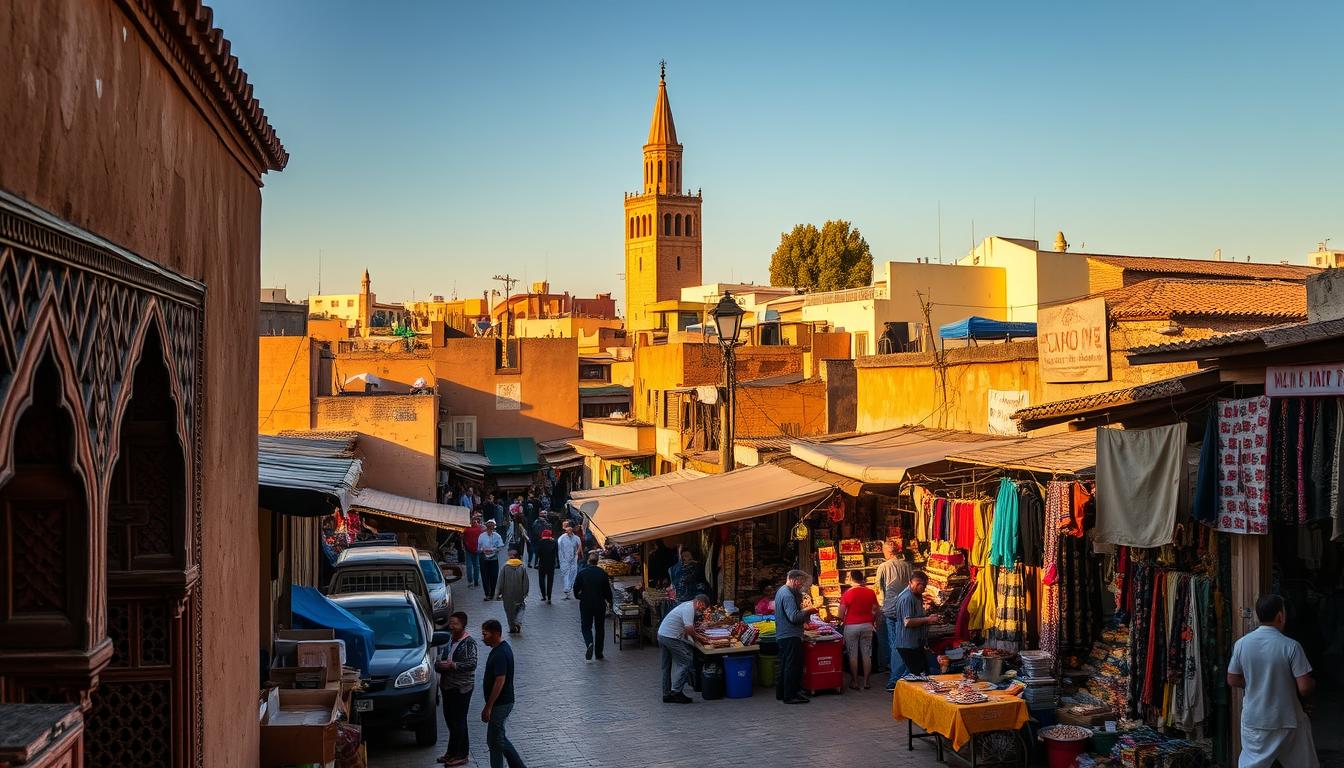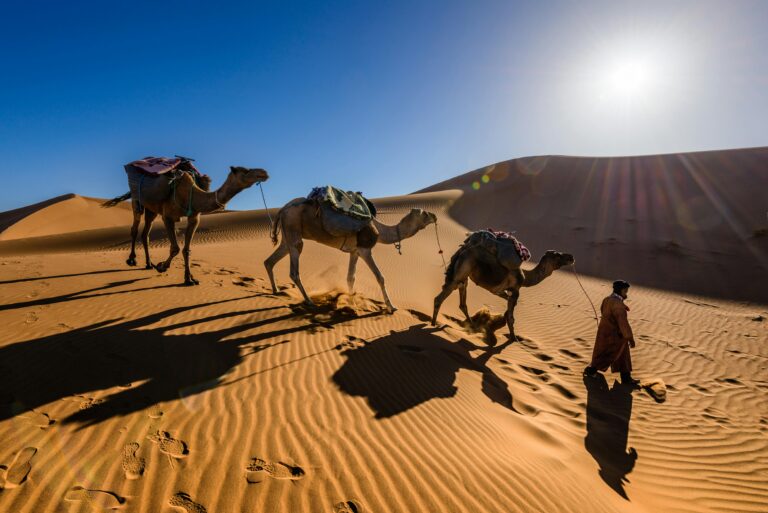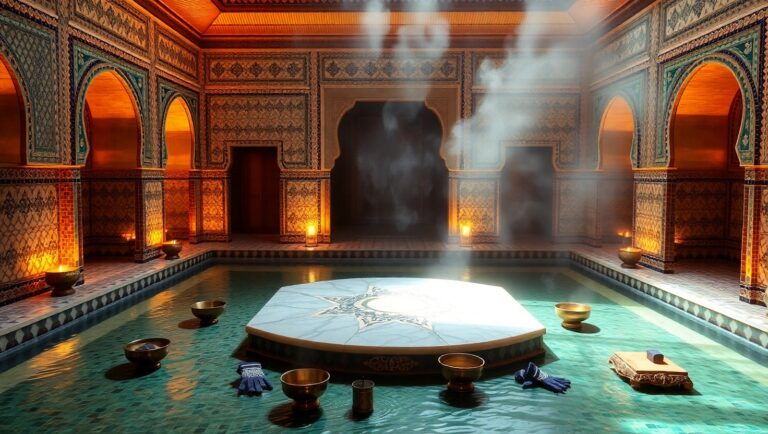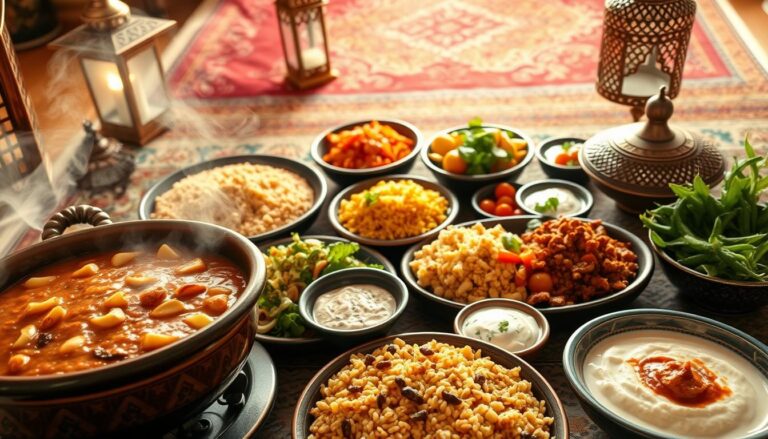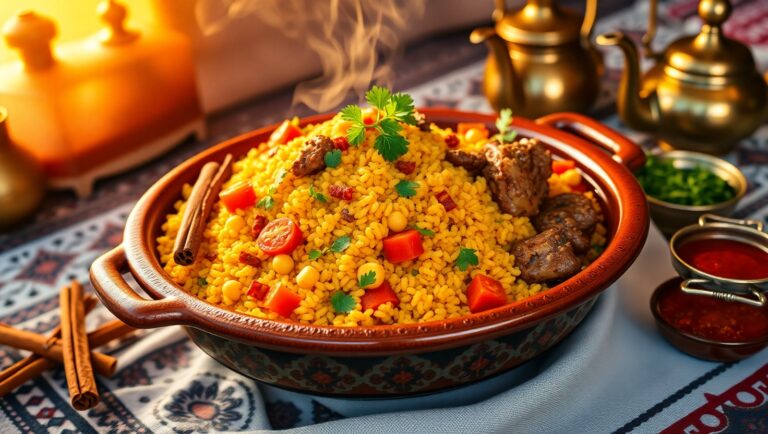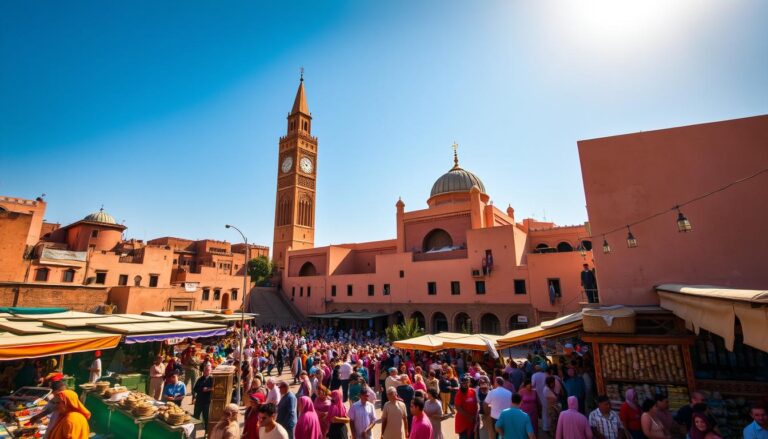What to Do in Fes, Morocco: Uncover the City’s Rich History
Fes, Morocco’s ancient capital, is a city that seamlessly blends tradition with modernity. With its rich history and cultural significance, Fes is a treasure trove of hidden gems and historical landmarks waiting to be explored.
As you wander through the city’s narrow streets, you’ll uncover the essence of Fes, from its vibrant souks to its stunning architectural heritage. Whether you’re a history buff, a culture vulture, or simply a curious traveler, Fes has something to offer.
Key Takeaways
- Explore Fes’ ancient medina, a UNESCO World Heritage Site
- Discover the city’s rich cultural heritage
- Visit historic landmarks, such as the Al-Attarine Madrasa
- Immerse yourself in Fes’ vibrant souks and markets
- Experience the city’s warm hospitality and traditional cuisine
Discovering the Ancient Soul of Morocco
Morocco’s ancient soul is perhaps best represented in Fes, a city steeped in history and cultural significance. Fes is not just a city; it’s an experience that encapsulates the essence of Morocco’s rich heritage.
The Cultural Significance of Fes
Fes is considered the cultural and spiritual heart of Morocco. The city is home to numerous historical landmarks, including the famous Al-Attarine Madrasa and the Bou Inania Madrasa, which showcase the country’s architectural prowess. The city’s ancient medina, Fes el Bali, is one of the largest car-free urban areas in the world and a UNESCO World Heritage Site.
The cultural significance of Fes is further highlighted by its role as a center of Islamic learning and culture. The city has been a hub of intellectual and spiritual activity for centuries, attracting scholars and visitors from around the world.
Best Time to Visit Fes
The best time to visit Fes is during the spring (March to May) and autumn (September to November), when the weather is mild and pleasant. These periods are ideal for exploring the city’s historic sites and enjoying the local culture.
- Spring: Enjoy mild temperatures and blooming flora.
- Autumn: Experience comfortable weather and fewer tourists.
Planning Your Stay Duration
To fully experience the essence of Fes, it’s recommended to stay for at least 3 to 4 days. This duration allows you to explore the ancient medina, visit historical landmarks, and immerse yourself in the local culture.
Key activities to consider during your stay:
- Explore the labyrinthine alleys of Fes el Bali.
- Visit the iconic tanneries and learn about traditional leather-making.
- Indulge in local cuisine and cooking classes.
By planning your visit accordingly, you can make the most of your time in Fes and create unforgettable memories.
What to Do in Fes: A Journey Through Time
Embarking on a journey through Fes is like stepping back in time, uncovering layers of history and cultural significance. This ancient city is a treasure trove of experiences waiting to be explored.
Overview of Fes’s Historical Timeline
Fes’s history dates back to the 8th century, with significant developments during the Idrisid dynasty. The city has been a crucial center for Islamic culture and learning, influencing its architecture, art, and traditions. Understanding Fes’s historical timeline is key to appreciating its landmarks and cultural practices.
The city’s evolution over centuries has resulted in a unique blend of Arab, Berber, and Mediterranean influences, making it a fascinating destination for history enthusiasts.
The Three Districts: Fes el Bali, Fes el Jdid, and Ville Nouvelle
Fes is divided into three main districts, each with its distinct character. Fes el Bali, the old medina, is the oldest and most historic part of the city, featuring narrow alleys and significant landmarks. Fes el Jdid, or the new Fes, was built in the 13th century and houses important sites like the Royal Palace. The Ville Nouvelle, or new town, is the modern section of Fes, developed during the French colonial period.
UNESCO World Heritage Status
Fes el Bali was designated a UNESCO World Heritage site in 1981, recognizing its cultural and historical significance. This status highlights the city’s well-preserved ancient architecture and its importance as a center of Islamic culture. Visitors to Fes can explore the medina’s historic sites, experiencing the city’s rich heritage firsthand.
The UNESCO World Heritage Fes designation has contributed to conservation efforts, ensuring the city’s historical treasures are preserved for future generations.
Exploring Fes el Bali: The World’s Largest Car-Free Urban Area
Fes el Bali, the ancient heart of Morocco, is a labyrinthine medina that beckons travelers to explore its rich history and vibrant culture. As the world’s largest car-free urban area, it offers a unique experience that combines tradition with breathtaking architecture.
Navigating the 9,000+ Alleyways
Navigating Fes el Bali can be a daunting task due to its 9,000+ alleyways. However, getting lost in its narrow streets is part of the adventure. Visitors can explore on foot or hire a local guide to uncover hidden gems and significant landmarks.
Must-See Landmarks in the Old Medina
The old medina is home to numerous historical and cultural landmarks. Some of the must-see attractions include:
- Al-Qarawiyyin Mosque and University: A historic center of learning and spiritual significance.
- Bou Inania Madrasa: Renowned for its intricate architecture and historical importance.
- Nejjarine Fountain and Museum: A beautiful example of Moroccan craftsmanship.
Al-Qarawiyyin Mosque and University
The Al-Qarawiyyin Mosque and University is not only a significant religious site but also a testament to the region’s historical contribution to education and culture. Founded in 859 AD, it is considered one of the oldest universities in the world.
Bou Inania Madrasa
Bou Inania Madrasa is a masterpiece of Merinid architecture, known for its intricate tile work, carved wood, and the serene ambiance it offers amidst the bustling medina.
Nejjarine Fountain and Museum
The Nejjarine Fountain and Museum is a beautifully restored 18th-century funduq (caravanserai) that now houses a museum showcasing Moroccan arts and crafts, offering insights into the country’s rich cultural heritage.
Exploring Fes el Bali is an immersive experience that combines history, culture, and adventure. With its rich tapestry of landmarks and traditions, it remains a must-visit destination for travelers seeking to understand Morocco’s vibrant heritage.
The Iconic Tanneries of Fes
Fes’s tanneries, with their vibrant colors and age-old techniques, offer a glimpse into the city’s medieval past. The tanneries are not just a relic of history but a living, breathing part of Fes’s economy and culture.
Chouara Tannery: A Living Museum of Traditional Leather-Making
The Chouara Tannery is one of the most famous and accessible tanneries in Fes. It’s a place where visitors can observe the traditional leather-making process, which has remained largely unchanged for centuries. The tanning process involves several stages, from soaking the hides to dyeing them in vibrant colors.
As you explore Chouara Tannery, you’ll notice the numerous stone vats filled with different colored liquids. These vats are used for dyeing the leather, and the colors are derived from natural substances like pomegranate and indigo.
Best Viewpoints and Photography Tips
To capture the best photos of the tanneries, consider the following tips:
- Visit early in the morning or late in the afternoon for the best light.
- Use a polarizing filter to reduce glare from the wet surfaces.
- Look for vantage points that offer a broad view of the tanneries, such as the surrounding terraces.
Shopping for Authentic Leather Goods
Fes is renowned for its high-quality leather goods, and shopping for these items can be a rewarding experience. Here are some tips:
- Inspect the quality of the leather and the craftsmanship.
- Be prepared to haggle, as it’s a common practice in Moroccan souks.
- Consider purchasing items like bags, belts, or wallets that are made from genuine leather.
Understanding the Tanning Process
The tanning process in Fes involves traditional methods that have been passed down through generations. It’s a labor-intensive process that requires great skill and attention to detail. Understanding this process can enhance your appreciation for the leather goods you purchase.
Sacred and Historical Sites of Fes
Fes, a city steeped in history and spirituality, is home to numerous sacred and historical sites that showcase its rich cultural heritage. The city’s historical significance is palpable as one navigates through its ancient districts.
Zaouia of Moulay Idriss II
The Zaouia of Moulay Idriss II is a revered religious complex and the mausoleum of the founder of the Idrissid dynasty, which played a pivotal role in Fes’s establishment. This sacred site is not only a place of worship but also a testament to the city’s historical depth.
Dar Batha Museum
Located in a 19th-century palace, the Dar Batha Museum showcases traditional Moroccan crafts, including intricate woodwork, ceramics, and weaving. The museum offers insights into the artisanal heritage of Fes.
The Jewish Quarter (Mellah) and Its Heritage
The Mellah, Fes’s historic Jewish quarter, is a significant cultural and historical site. Visitors can explore the narrow streets, synagogues, and historic homes, gaining a deeper understanding of the Jewish community’s heritage in Fes.
Borj Nord Arms Museum
Perched on a hill, the Borj Nord Arms Museum is a 19th-century fortress turned museum that houses a collection of traditional Moroccan arms. It offers panoramic views of Fes and insights into the city’s military history.
Fes’s sacred and historical sites are a testament to its rich and diverse heritage, making it a fascinating destination for history buffs and travelers alike.
Culinary Adventures in Fes
Fes, a city steeped in history and culture, is also a culinary gem waiting to be explored. The city’s cuisine is a reflection of its rich heritage, blending traditional Moroccan flavors with local ingredients.
Traditional Moroccan Dishes to Try
When in Fes, indulge in traditional Moroccan dishes such as tagine, a slow-cooked stew named after the earthenware pot in which it’s cooked, and couscous, a staple made from semolina flour. Don’t miss out on pastilla, a savory pie filled with meat, onions, and spices.
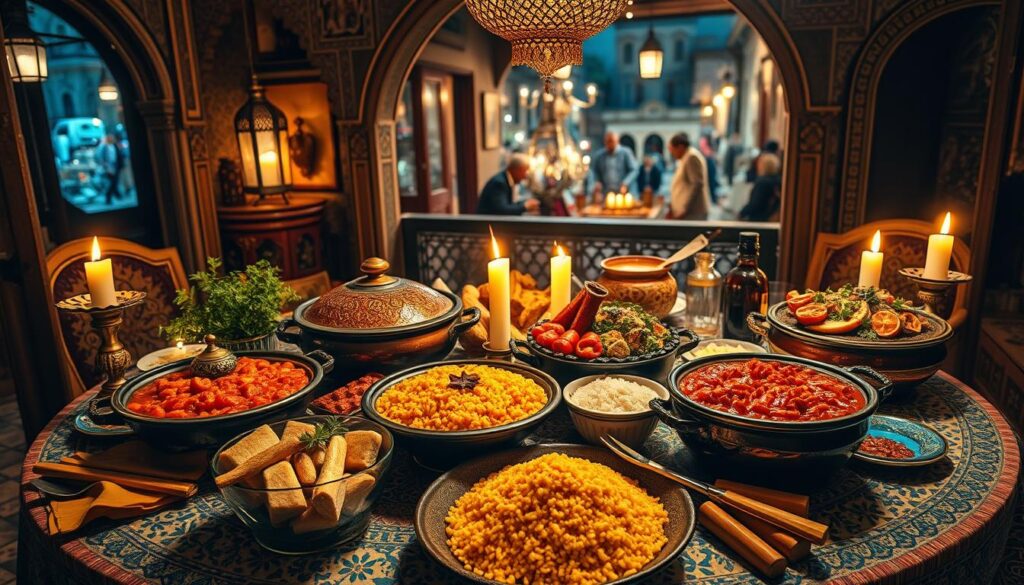
Food Tours and Cooking Classes
Join a guided food tour to explore the city’s culinary delights. Many tours include visits to local markets and cooking classes where you can learn the art of Moroccan cooking. Some popular food tours offer a behind-the-scenes look at traditional cooking methods.
Best Restaurants and Cafés
Fes is home to numerous restaurants and cafés serving authentic Moroccan cuisine. Some top recommendations include restaurants located within historic riads, offering a unique dining experience. For a casual meal, visit a local café to enjoy traditional mint tea and pastries.
Street Food Safety for American Travelers
While street food is a tempting option, it’s essential to prioritize food safety. Opt for stalls or vendors that are busy and have a high turnover of food, reducing the risk of foodborne illness. Be sure to drink bottled or filtered water and avoid consuming raw or undercooked foods.
| Dish | Description | Recommended At |
|---|---|---|
| Tagine | Slow-cooked stew | Local restaurants |
| Couscous | Semolina flour staple | Traditional eateries |
| Pastilla | Savory pie | Specialty food shops |
As you explore the culinary landscape of Fes, remember to embrace the local culture and traditions. Whether you’re dining at a high-end restaurant or enjoying street food, the city’s cuisine is sure to leave a lasting impression.
Artisan Crafts and Shopping Experiences
Shopping in Fes is an adventure that takes you through centuries-old souks, where the art of traditional crafts like Moroccan ceramics and textiles comes alive. The city’s markets are a treasure trove of artisanal goods, reflecting the rich cultural heritage of Morocco.
The Art of Moroccan Ceramics
Moroccan ceramics are renowned for their vibrant colors and intricate designs. Visitors can explore various workshops and markets to witness the craftsmanship firsthand and purchase unique pieces.
Textile Markets and Carpet Shops
The textile markets in Fes offer a wide range of products, from traditional Berber carpets to elegant clothing. Shopping in these markets is not just about buying goods; it’s an immersive cultural experience.
Haggling Tips for the Souks
Haggling is an integral part of shopping in Fes’s souks. Understanding the local customs and being prepared to negotiate can make the experience enjoyable and rewarding.
Shipping Purchases Back to the United States
For those looking to take a piece of Fes back home, there are reliable shipping services available. Understanding the shipping options and costs can help ensure that your purchases reach you safely.
| Item | Average Price | Shipping Cost to USA |
|---|---|---|
| Moroccan Ceramic | $20-$50 | $10-$20 |
| Berber Carpet | $100-$500 | $50-$100 |
| Traditional Clothing | $30-$100 | $15-$30 |
Cultural Immersion Activities
The ancient city of Fes is a treasure trove of cultural experiences, from traditional hammams to vibrant local festivals. Visitors can engage deeply with the local culture through various activities that showcase the city’s rich heritage.
Traditional Hammam Experience
A visit to a traditional hammam is a quintessential Fes experience. These ancient steam baths are not just about relaxation; they’re a cultural institution where locals gather to socialize and rejuvenate. As a visitor, you can enjoy a hammam experience that includes a scrub and massage, offering a unique glimpse into local customs.
Music and Dance Performances
Fes is known for its vibrant cultural scene, which includes traditional Gnawa music and dance performances. These events are a celebration of the city’s diverse cultural influences and offer visitors a chance to experience the local arts firsthand.
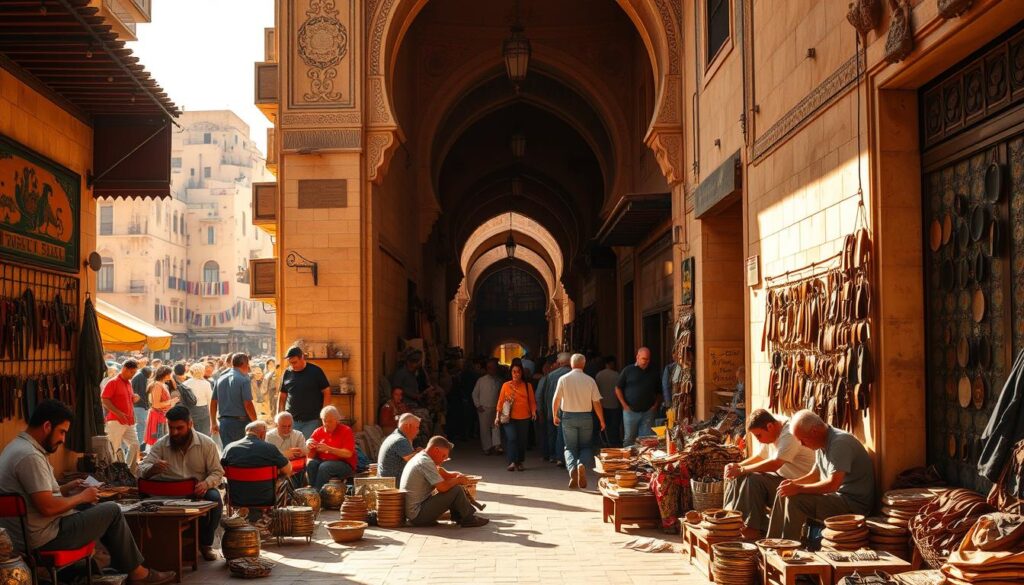
Local Festivals and Celebrations
The city hosts various local festivals throughout the year, showcasing its rich cultural heritage. From the Fes Festival of World Sacred Music to local moussems (festivals), these events are a great way to experience the city’s vibrant culture.
Connecting with Local Artisans
Visitors can also immerse themselves in Fes’s artisanal culture by visiting workshops and connecting with local artisans. This hands-on experience provides insight into traditional crafts such as pottery, weaving, and woodworking.
By engaging in these cultural immersion activities, visitors can develop a deeper appreciation for Fes’s unique heritage and create lasting memories of their trip.
Day Trips from Fes
Beyond the ancient walls of Fes lies a wealth of exciting day trip destinations that showcase the diversity of Morocco. Travelers can explore historical sites, experience the natural beauty of the region, and immerse themselves in local cultures.
The Roman Ruins of Volubilis
One of the most significant day trip destinations from Fes is the Roman Ruins of Volubilis, a UNESCO World Heritage Site. This ancient city is renowned for its well-preserved mosaics and historical significance, offering a glimpse into Morocco’s Roman past.
The Holy Town of Moulay Idriss
Another fascinating destination is the holy town of Moulay Idriss, a place of great spiritual importance in Morocco. Visitors can explore the town’s narrow streets, visit the mausoleum of Moulay Idriss II, and experience the local culture.
The Blue City of Chefchaouen
For those looking for a more relaxed day trip, the Blue City of Chefchaouen is a picturesque town nestled in the Rif Mountains. Its blue-painted buildings, scenic views, and laid-back atmosphere make it a perfect spot for unwinding.
Middle Atlas Mountains and Ifrane
Nature lovers can explore the Middle Atlas Mountains and visit the town of Ifrane, known for its ski resorts and alpine architecture. This region offers a cool respite from the heat of the cities and a chance to enjoy outdoor activities.
| Destination | Distance from Fes | Main Attractions |
|---|---|---|
| Volubilis | Approx. 2 hours | Roman Ruins, Mosaics |
| Moulay Idriss | Approx. 1.5 hours | Holy town, Mausoleum |
| Chefchaouen | Approx. 3.5 hours | Blue-painted buildings, Rif Mountains |
| Ifrane | Approx. 2.5 hours | Ski resorts, Alpine architecture |
Practical Travel Tips for Visiting Fes
To make the most of your visit to Fes, it’s essential to be aware of the practical travel tips that can make your journey smoother. Fes, being a city steeped in history and culture, requires some preparation to fully appreciate its beauty and charm.
Accommodation Options
Fes offers a wide range of accommodation options, from traditional riads to modern luxury hotels. Riads, with their characteristic Moroccan architecture, provide an authentic experience, while luxury hotels offer comfort and amenities. When choosing your accommodation, consider the location and proximity to major attractions.
Getting Around
Transportation in Fes includes taxis, buses, and walking. Taxis are readily available, but be sure to agree on the fare before you start your journey. The city is also very walkable, especially within the medina, where many of the historical sites are located.
Safety and Etiquette
Fes is generally a safe city, but as with any travel destination, it’s wise to take certain precautions. Be mindful of your belongings, especially in crowded areas, and respect local customs and traditions. Dressing modestly and being aware of local etiquette can enhance your experience and interactions with the locals.
Currency, Language, and Communication
The local currency is the Moroccan dirham. While many locals in the tourism industry speak some English, learning a few basic phrases in Arabic or French can be helpful. Mobile phone coverage is good, and many cafes and riads offer Wi-Fi, making it relatively easy to stay connected.
Conclusion: The Timeless Allure of Fes
Fes, Morocco, is a city that seamlessly weaves together rich history, vibrant culture, and breathtaking natural beauty, making it a captivating destination for travelers. The timeless allure of Fes lies in its ancient medina, Fes el Bali, where narrow alleyways and historic landmarks transport visitors back in time.
From the iconic tanneries to the sacred and historical sites, Fes is a city that offers a unique blend of traditional and modern experiences. As a hub for Fes tourism, the city provides an array of cultural immersion activities, artisan crafts, and culinary adventures that cater to diverse interests.
Whether you’re exploring the city’s ancient soul, indulging in local cuisine, or simply soaking up the atmosphere, Fes is sure to leave a lasting impression. With its unparalleled history, cultural significance, and natural charm, Fes is a destination that will continue to captivate travelers for generations to come, embodying the essence of the timeless allure of Fes.

